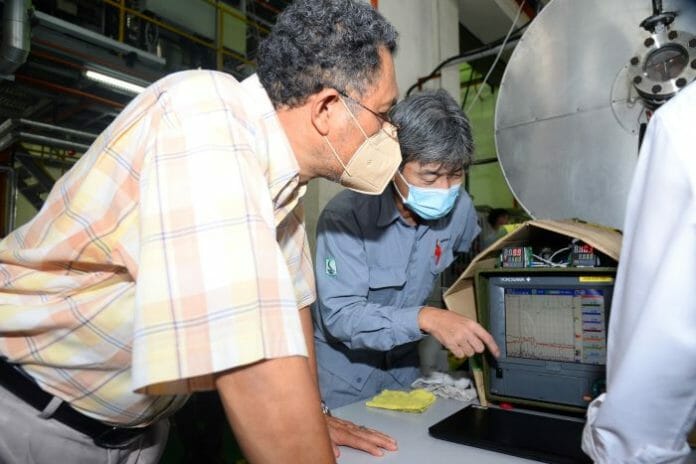In a continuous effort to look at ways to reduce carbon emissions in the power sector, Tenaga Nasional Berhad’s wholly-owned subsidiaries, TNB Research Sdn Bhd and TNB Power Generation Sdn Bhd together with IHI Power System Malaysia Sdn Bhd and Petronas Hydrogen Sdn Bhd have successfully conducted an ammonia co-combustion test which sees a reduction in carbon emission.
The ammonia and coal co-combustion test was recently carried out at TNBR’s test rig facility in Kajang, Selangor.
The experiment of ammonia co-firing was successful with Carbon Dioxide (CO2) and Sulfur Dioxide (SO2) emissions being reduced in accordance with the co-firing rate. In addition, there was no generic ammonia detected at the exit of the furnace during the experiment. The flame temperature for both cases of coal and co-firing do not vary significantly. The result seems to be in favour of the experiment objective towards decarbonisation, which would be a great opportunity for TNB to move forward in having pilot plants upon obtaining approval from the authorities.
The co-combustion test was led by IPSM, an expert in the development of ammonia combustion technology. Petronas Hydrogen’s role in the experiment is in supplying ammonia and the associated equipment while TNBR, which owned the test rig facility, supported the experiment through co-combustion execution that includes manpower, utility, and measurement devices. TNB Genco provided 3 types of coal that are currently being used in its existing coal power plant for the experiment.
The main objective of the experiment is to determine the impact of co-firing ammonia as carbon-free fuel together with coal in a coal-fired power generation system. Theoretically, ammonia co-firing could significantly reduce Carbon Dioxide (CO2) emissions which suppresses nitrogen oxides while stabilising combustion.
The experiment was conducted using three types of commonly used coal in Malaysian coal-fired power plants. The ammonia ratio is increased gradually from 0% up to 60% for each coal type experiment. Besides CO2 emission, the test is to observe the impact on boilers, flame stability, amount of unburned coal, flue gas properties, sulphur oxide measurement, coal slagging and fouling.
Ammonia and coal co-combustion experiment is part of TNB’s initiatives to explore decarbonisation opportunities in tandem with its TNB’s Sustainability Pathway and in support of the government’s initiative to reach the target of 45% greenhouse gas (GHG) intensity reduction in 2030.









